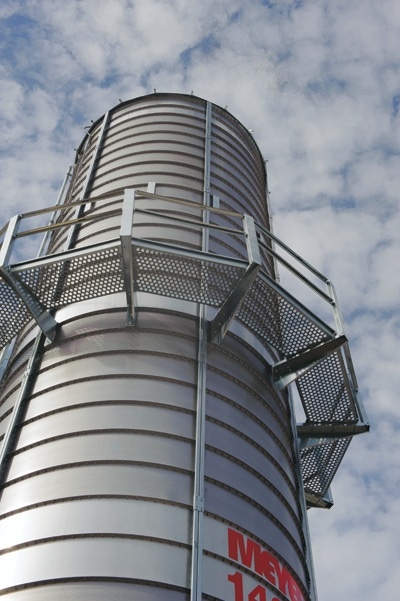September 22, 2011

Whatever the crop conditions turn out to be this fall, it’s a good idea to consider how to ensure that your corn harvest and drying operations run smoothly when the time comes, says Ken Hellevang, North Dakota State Extension engineer and grain storage specialist. To help improve the speed and energy efficiency of your drying process in 2011, Hellevang and Robert Hansen, Ohio State University agricultural engineer, provide the following tips:
Employ combination drying. “Any corn with moisture content exceeding 25% is not fit for natural air drying, unless you use a combination drying system, where you run it through a high-temperature dryer to reduce moisture first to about 23% moisture and then take it to a natural air dryer,” Hansen says.
In North Dakota, any corn moved to a natural air dryer should be dried to at least 21% moisture if air drying will occur at a 1-cfm/bu. fan rate, Hellevang says. Moisture content can be as high as 22% for a fan rate of 1.5 cfm/bu. and 23 to 24% for a fan rate of 2 cfm/bu., he adds.
Consider heat reclamation and in-bin cooling systems. Certain features can make a dryer much more energy-efficient, Hellevang says. “First, a heat reclamation or vacuum-cooling system on the cooling portion of the drying process can save 20 to 30% on energy consumption compared to dryers without that system,” he points out. “Second, combining a high-temperature dryer with in-bin cooling can provide a 15 to 20% energy savings. However, if you utilize a heat reclaim system, you cannot also obtain the energy savings of in-bin cooling.”
Try dryeration. Another system that can be successful when facing a large amount of high-moisture corn at harvest is dryeration, Hansen says. “With dryeration, you dry the corn down to 18% with a high-temperature dryer and let it steep without airflow in a storage bin overnight, or at least four to six hours, after you’ve leveled it,” he explains. “Steeping the grain overnight allows the moisture from the inside of the kernel to migrate to the outside. In the morning, turn on the cooling fans, and within a day, the corn is all dried and cooled to 15%.”
A potential drawback to a dryeration system is that significant condensation can occur along the bin wall, depending on outside air temperatures during steeping, Hellevang points out. “If condensation occurs, corn near the bin wall will spoil, unless it is mixed with the dry corn in the bin by transferring it to another bin soon after steeping,” he says.
Condensation problems along bin walls during steeping are less common in Ohio, however, Hansen notes. “In this system, you can almost double your throughput compared to drying it down to 15% by solely relying on a high-temperature dryer,” he says. “With dryeration, you can also cut your energy costs [propane, plus electricity] about one third compared to high-temperature drying only. However, it’s important to equip the storage bins with cooling fans that deliver approximately 1 cfm/bu. to be effective.”
When using a dryeration system, Ohio farmers can often keep adding hot corn on the previously dried and cooled corn in the same bin, Hansen notes. “Plus, dryeration helps reduce bottlenecks at harvest by reducing the time that the corn needs to stay in the dryer,” he adds.
About the Author(s)
You May Also Like




